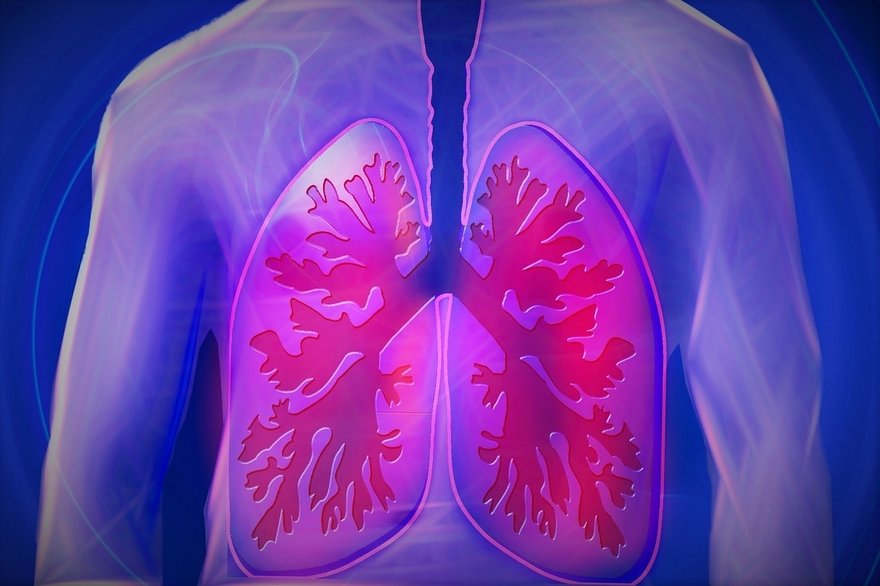Millions of Americans May Have Tobacco-Related Lung Disease That Does Not Fit Disease Criteria
Images

A new study led by researchers at UC San Francisco suggests that millions of Americans with tobacco-related lung disease have symptoms that do not fit any existing tobacco-related disease criteria – including the most common of those, chronic obstructive pulmonary disease (COPD).
In a study published in the Journal of the American Medical Association (JAMA), the research team found that half of the participants with extensive tobacco exposure had a persistently high level of respiratory symptoms, including shortness of breath, daily cough and phlegm, and decreased ability to exercise, but performed well in the breathing tests used to diagnose COPD.
COPD assessment was an essential part of the “SubPopulations and InteRmediate Outcome Measures In COPD Study” (SPIROMICS) - a multicenter study of 1379 people 40 to 80 years old who had more than 20 pack-years of tobacco exposure (smoking one pack of cigarettes per day for 20 or more years). The study also included control participants who had never smoked cigarettes and did not have airflow obstruction.
COPD is the sixth leading cause of death in the United States and is frequently associated with long-term tobacco exposure. In 2020, an estimated 12.5 million Americans reported having been diagnosed with COPD, according to the Centers for Disease Control and Prevention. Yet previous studies indicated that more than 18 million had evidence of impaired lung function, a sign that millions more might be suffering without a clear diagnosis.
COPD is assessed with spirometry, a lung function test that measures how quickly and effectively a person can fill and then empty their lungs at maximum effort. It is diagnosed when the test shows airflow obstruction, indicating a problem with getting enough air out in the normal amount of time. Evidence of airflow obstruction is medically defined as an abnormally low ratio of the forced expiratory volume in the first second (FEV1) of an exhalation to total forced vital capacity (FVC).
“We found that many people who have a lot of primary tobacco exposure have the same symptoms as people who have COPD, but can’t be diagnosed with COPD, because their FEV1/FVC ratio is considered normal on spirometry,” said William McKleroy, MD, a former UCSF Pulmonology Fellow and first author of the study. “This demonstrates a major gap in effective and compassionate care for tobacco-exposed persons and highlights the need for further study to find ways to help them.”
Participants were enrolled in SPIROMICS I from November 2010 to July 2015 and followed through July 2021 in an extension study, SPIROMICS II. They underwent spirometry, 6-minute walk distance testing, assessment of respiratory symptoms, and CT scans of their lungs, at yearly visits for 3 to 4 years. Many of these participants then completed another round of testing 5 to 10 years after their original visit.
Some of the study participants were found to have COPD after undergoing spirometry, while others had “preserved spirometry,” meaning they did not have COPD. The researchers found that the vast majority of the participants with tobacco exposure and preserved spirometry (TEPS) and pulmonary symptoms at the beginning of the study continued to have symptoms through more than five years of follow-up. They also had high rates of respiratory exacerbations and shortness of breath that limited their ability to be active over the course of the study.
Additionally, participants with symptomatic TEPS did not have increased incidence of COPD compared those with asymptomatic TEPS (33.0% among participants with symptomatic TEPS vs. 31.6% among those with asymptomatic TEPS), or a faster rate of lung function decline, as measured by the decline in FEV1 over time, compared to asymptomatic TEPS participants. By contrast, participants with COPD did have a more rapid rate of FEV1 decline compared to symptomatic TEPS participants.
“These findings suggest that a large proportion of tobacco smoke-exposed persons without airflow obstruction have a persistent, symptomatic non-obstructive chronic airway disease that is distinct from COPD,” said Prescott Woodruff, MD, MPH, UCSF division chief of Pulmonology and principal investigator for SPIROMICS. “Although tobacco-exposed persons with preserved spirometry are currently categorized as having pre-COPD by the COPD guidelines, the data from the current study emphasize that the definition of smoking-related lung disease needs to be broadened so new treatments can be developed.”
The study found that many individuals with a history of smoking have respiratory symptoms and increased risk of exacerbations that persist over several years, added James Kiley, Ph.D., director of the Division of Lung Diseases at the National Heart, Lung, and Blood Institute, part of the National Institutes of Health.
“Even in persons with no respiratory symptoms and normal breathing tests, smoking continues to harm their lungs," Kiley said. "The study results highlight the importance of smoking cessation, underscore the need for regular follow-up of smokers with and without symptoms, and call for more research to treat respiratory symptoms due to smoking.”
In addition to the findings related to symptomatic TEPS, the study also found a higher proportion of black individuals in the study had symptomatic TEPS compared with white participants. They also found an increased risk of progression to COPD in black participants as compared with white participants in this study. The authors suggest an evaluation of the contribution of occupational and environmental exposures, socioeconomic status and structural racism to the development of these symptoms.
Related Articles
Citation
. Millions of Americans May Have Tobacco-Related Lung Disease That Does Not Fit Disease Criteria. Appl Radiol.
August 3, 2023